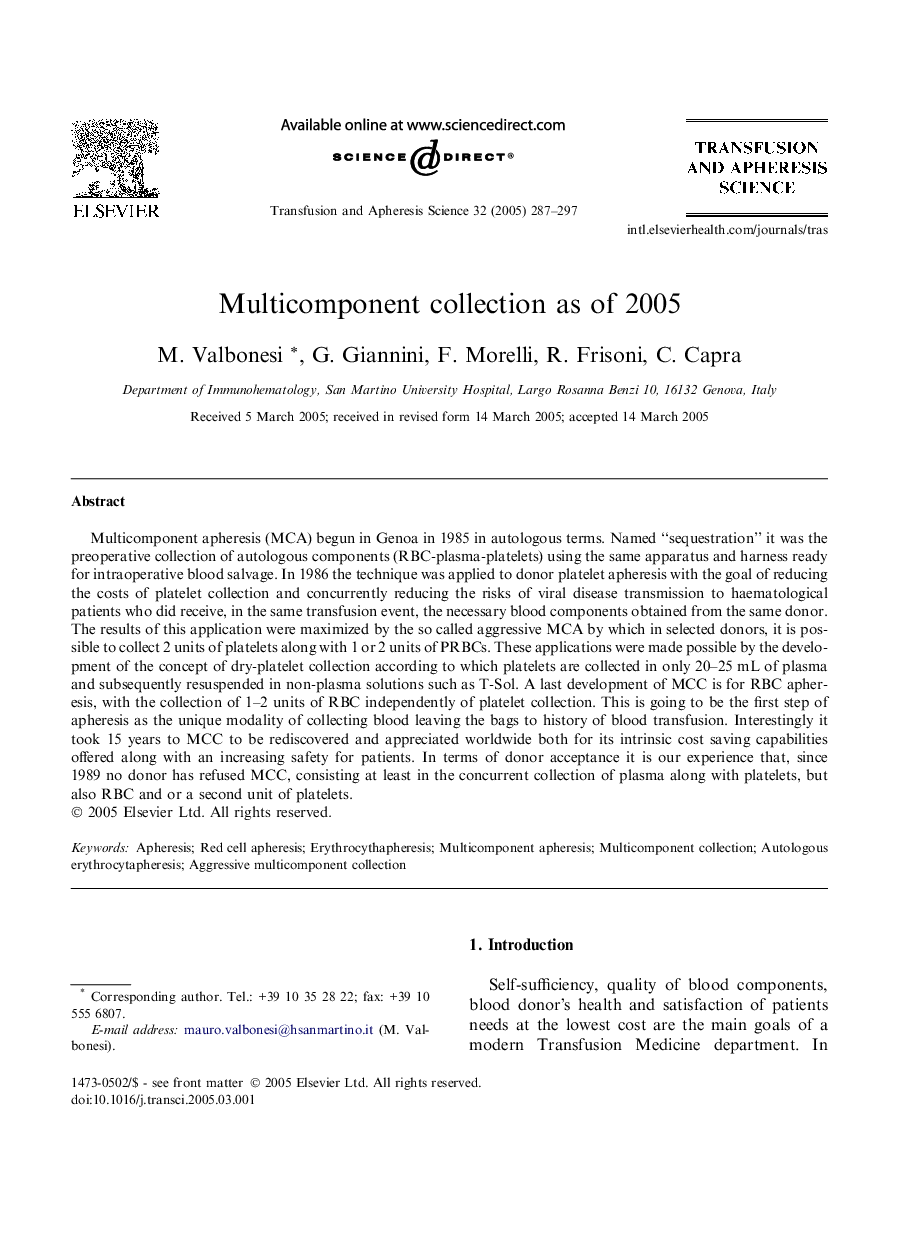| Article ID | Journal | Published Year | Pages | File Type |
|---|---|---|---|---|
| 9258956 | Transfusion and Apheresis Science | 2005 | 11 Pages |
Abstract
Multicomponent apheresis (MCA) begun in Genoa in 1985 in autologous terms. Named “sequestration” it was the preoperative collection of autologous components (RBC-plasma-platelets) using the same apparatus and harness ready for intraoperative blood salvage. In 1986 the technique was applied to donor platelet apheresis with the goal of reducing the costs of platelet collection and concurrently reducing the risks of viral disease transmission to haematological patients who did receive, in the same transfusion event, the necessary blood components obtained from the same donor. The results of this application were maximized by the so called aggressive MCA by which in selected donors, it is possible to collect 2 units of platelets along with 1 or 2 units of PRBCs. These applications were made possible by the development of the concept of dry-platelet collection according to which platelets are collected in only 20-25 mL of plasma and subsequently resuspended in non-plasma solutions such as T-Sol. A last development of MCC is for RBC apheresis, with the collection of 1-2 units of RBC independently of platelet collection. This is going to be the first step of apheresis as the unique modality of collecting blood leaving the bags to history of blood transfusion. Interestingly it took 15 years to MCC to be rediscovered and appreciated worldwide both for its intrinsic cost saving capabilities offered along with an increasing safety for patients. In terms of donor acceptance it is our experience that, since 1989 no donor has refused MCC, consisting at least in the concurrent collection of plasma along with platelets, but also RBC and or a second unit of platelets.
Keywords
Related Topics
Health Sciences
Medicine and Dentistry
Hematology
Authors
M. Valbonesi, G. Giannini, F. Morelli, R. Frisoni, C. Capra,
